





Steviozid
Steviozid – the chemical compound which is present at plant leaves the Stevia. This glycoside is known for the 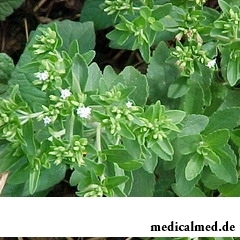 intensive sweet taste because of what it is used as sweetener.
intensive sweet taste because of what it is used as sweetener.
The dried-up leaves and water extracts of a stevia were used for decades as sweetener in many countries, in particular in Latin America and Asia (Japan, China). Steviozid was found in 1931 by the French chemists M. Bridel and R. Lavyey. Steviozid is considered about 300 times more sweet, than a sugarcane. It is received by extraction of leaves of a stevia water.
Steviozida – heat-resistant, рН the stable, and not giving in to process of fermentation glycosides. Besides, they do not cause a glycemic index at hit in an organism that does them attractive as natural sweeteners for the diabetics and people keeping to a carbohydrate diet.
Properties of a steviozid
Steviozid is stable to heating, acid and alkaline рН, represents soluble white powder in water. A molecular formula of a steviozid – C38H60O18, molar weight – 804.8722 ± 0,04 g/mol, merge temperature – 198 °C, solubility – 1250 mg/l.
Use of a steviozid
In the food industry стевиозид it is applied as the E960 nutritional supplement acting as sweetener.
In cookery стевиозид it is applied as sweetener to preparation of confectionery and pastries, alcoholic beverage products, dairy products, juice and soft drinks, production of mayonnaise and ketchups, fruit canned food and sports food. In foodstuff стевиозид it is used as noncaloric sweetener and the amplifier of taste.
In medicine стевиозид it is used at treatment of diabetes, obesity, the increased blood pressure and heartburn, for decrease in level of uric acid and increase in durability of reductions of the cardiac muscles pumping blood from heart.
Some researches show that reception of 750-1500 mg of a steviozid a day reduces systolic arterial pressure by 10-14 mm of a mercury column and diastolic arterial pressure by 6-14 mm of a mercury column within one week from the beginning of reception. Nevertheless, other researches show that reception 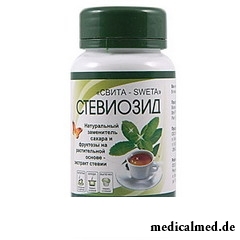 of a steviozid in a dose to 15 mg on kg a day does not lead to an essential lowering of arterial pressure at patients with high blood pressure.
of a steviozid in a dose to 15 mg on kg a day does not lead to an essential lowering of arterial pressure at patients with high blood pressure.
Also daily reception of 1000 mg of a steviozid after meal can lower sugar level in blood by 18% at people with a diabetes mellitus of the second type. Nevertheless, other researches show that reception of 250 mg of a steviozid three times a day has no significant effect on sugar level in blood after three months of treatment at people with the first or second type of a diabetes mellitus.
Harm of a steviozid
Steviozid is safe for use as sweetener in food stuffs in doses to 1500 mg a day within 2 years. According to reviews, стевиозид sometimes makes abdominal distention or sick. Also, according to reviews, стевиозид can cause dizziness, muscular pains and numbness.
You should not combine use of a steviozid with the tablets normalizing the content of lithium in an organism. Also стевиозид you should not combine with tablets for decrease in sugar in blood, such as глимепирид, glibenclamide, insulin, пиоглитазон, росиглитазон, Chlorproramidum, глипизид, Tolbutamidum and others.
стевиозид can do harm to an organism at the parallel use with anti-hypertensive medicines, such as captopril, enalapril, лозартан, валсартан, diltiazem, амлодипин, a hydrochlorothiazide, furosemide and others. Combined use of a steviozid with these drugs can lead to excessive lowering of blood pressure.
Contraindications
Contraindication to a steviozid is pregnancy and the period of a lactation as there is not enough knowledge and researches on influence of additive on an organism in these states. Also a contraindication to a steviozid is the allergy to families of a thistle family of plants. This family includes ambrosias, chrysanthemums, marigold, daisies and many other plants.
With care стевиозид appoint at the low blood pressure as стевиозид leads to its lower indicators.
During life the average person develops neither more nor less two big pools of saliva.

According to data of World Health Organization, the cataract is diagnosed almost for 7% of the population of Earth. Statistics we get sick...
Section: Articles about health
The depression not without reason is considered one their main troubles of our century: for scientific and technical progress, acceleration of rate of life and a surplus of information of people it is forced to pay with stresses, negative emotions and weakening of protective forces of an organism. As a result ш...
Section: Articles about health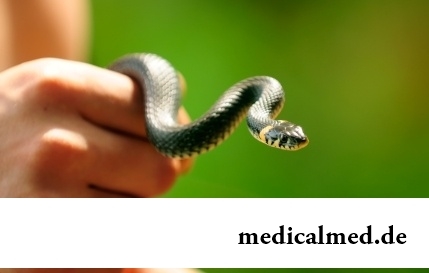
Health and attractiveness - eternal values, pursuing which people often use the most unusual ingredients and technicians. Let's consider 11 most exotic and sometimes not most pleasant Spa procedures to which the person in a pursuit of beauty and youth agrees....
Section: Articles about health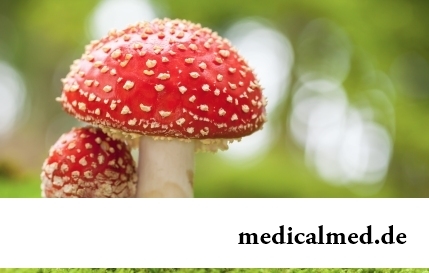
Mushrooms - the surprising inhabitants of our planet having a set of wonderful qualities. Thanks to one of them, a mold mushroom of Penici...
Section: Articles about health
All are familiar with cold, and practically everyone believes that he has sufficient knowledge and experience that correctly to treat it. In practice most of people makes mistakes in attempts to get rid of rhinitis, and divides numerous delusions it....
Section: Articles about health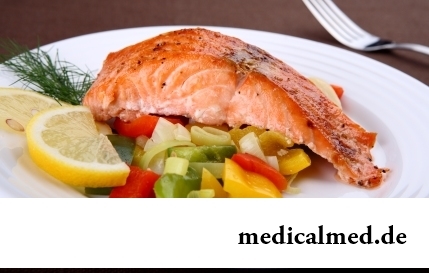
Diseases of joints often begin imperceptibly for the person. The first stages of destruction of the cartilaginous tissue providing soft and free sliding of heads of bones in joint bags proceed slowly and absolutely without serious consequences. Especially unpleasantly for the fact that this process is not connected with advanced age: degradation of joint surfaces is, as a rule, noticeable after 30 years. It means that practically each able-bodied person at any time can face sad results...
Section: Articles about health
Statistically cystitis 25-30% of women up to 40 years have. With age this indicator raises, besides many do not get in to become...
Section: Articles about health
The stroke is one of the most widespread diseases of the person, annually in the world about 6 million cases of this pathology are registered. According to medical statistics, strokes occur almost three times more often than myocardial infarctions. Disease otno...
Section: Articles about health
From the failure of work of immune system which is shown in the form of an allergy, statistically, more than 40% of the population of the globe suffer. In most cases pathological reactions cause the substances which are contained in food stuffs, hair of animals, medicines, goods of household chemicals, cosmetics, pollen of plants, etc. On the one hand, the disease such is capable to spoil quite thoroughly to the person life....
Section: Articles about health
Cystitis, or inflammation of a mucous membrane of a bladder, this very widespread disease, which, owing to some persons...
Section: Articles about health
The name of this disease precisely reflects the problem reason: it consists in the bra fastener pressure upon a certain zone of a back. At the same time one of vertebrae of chest department of a backbone is as if blocked and loses mobility, and falling on it is nude...
Section: Articles about health
Eyes – unique body on the structure thanks to which the person obtains about 80% of information on the world around: about a form, color, size, the movement, and also many other parameters of objects or phenomena. But whether much we know about the most valuable sense body which, according to the scientist Sechenov, provides us about one thousand various feelings a minute? Let's consider 10 most surprising facts about eyes and sight....
Section: Articles about health
Life of the modern woman is very difficult. Opportunities to realize itself are wide: it not only education and career, but also most differently...
Section: Articles about health
A lot of things depend on a condition of a backbone in a human body, a backbone - not only a support for a body, it also a receptacle for a spinal cord, that is why malfunctions with a backbone are so dangerous. To treat rachis diseases very difficult and long...
Section: Articles about health
Helminthosis is one of the most widespread diseases. Statistically, any species of helminths infected every third inhabitant of the planet. Most of specialists even consider these data strongly underestimated: some uninvited "cohabitants" do not cause the carriers serious troubles, and patients just do not see doctors. The situation is aggravated also with the fact that people know about specifics of similar illnesses very little. At many presence of worms is strong ассоциир...
Section: Articles about health
Eyes – one of the most vulnerable areas on a face therefore age changes concern them first of all. Whether it is possible to keep a pier...
Section: Articles about health
Partial and the more so full loss of hearing significantly reduces quality of life. Difficulties with communication lead to loneliness and isolation. The person who badly hears experiences difficulties with social and professional implementation, quite often has problems in...
Section: Articles about health
Osteoporosis this general disease which main sign is decrease in density of a bone tissue. On distribution width it takes the fourth place among noninfectious diseases. The illness develops at mature age more often: in our country about a third of women and a quarter of men suffers from it 50 years are more senior....
Section: Articles about health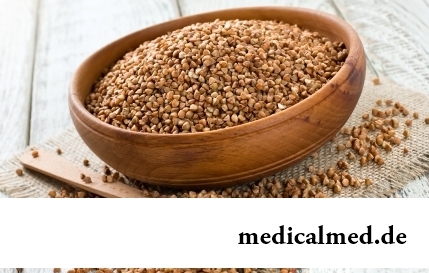
History of cultivation of a buckwheat contains more than five thousand years. Grain which is received from this plant is used for пригото...
Section: Articles about health
Life expectancy in various regions of Earth is not identical. Social stability, economic wellbeing, availability and level of medical care, household comfort, literacy of the population in the field of observance sanitary гигиен exert impact on it...
Section: Articles about health
The endocrine system carries out extremely important role in a human body, practically all processes of life activity are regulated by it. Closed glands (hemadens) produce special biologically active agents – hormones which then get to a blood channel and are transferred to bodies addressees, or as they are called still, to target organs. Frustration of this mechanism are fraught with development of serious chronic pathologies....
Section: Articles about health
Not everyone can brag of the shining Hollywood smile. Even at the person who is regularly visiting the stomatologist and watching з...
Section: Articles about health
For the last decades the diabetes mellitus of the second type became really world problem. The number of cases annually increases, and average age of patients for whom the illness is diagnosed, steadily decreases. Specialists consider that one of osno...
Section: Articles about health
Aging — natural and inevitable process. Over time our skin loses elasticity, on it saggings are formed, the face form loses former clearness. The procedure of nitevy lifting (nitevy tightening) can successfully solve this problem. In order that it is better to get acquainted with this popular procedure, we will tell you 6 cognitive facts about it....
Section: Articles about health
The advantage of swimming for the person is so high that this sport is not only the most popular, but also is widely applied in copper...
Section: Slideshow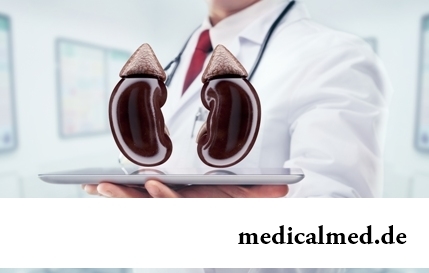
Kidneys perform the most important function of clarification of blood from those products of metabolic processes which cannot be used by an organism for obtaining energy and construction of new cells. With the urine produced by kidneys from a body of the person bulk is removed...
Section: Articles about health
So, you resolved to lose weight. And now you try to understand what to begin with: from exercise stresses or a diet? And how to make that process of weight loss did not give you an inconvenience, and, on the contrary, brought joy?...
Section: Slideshow
